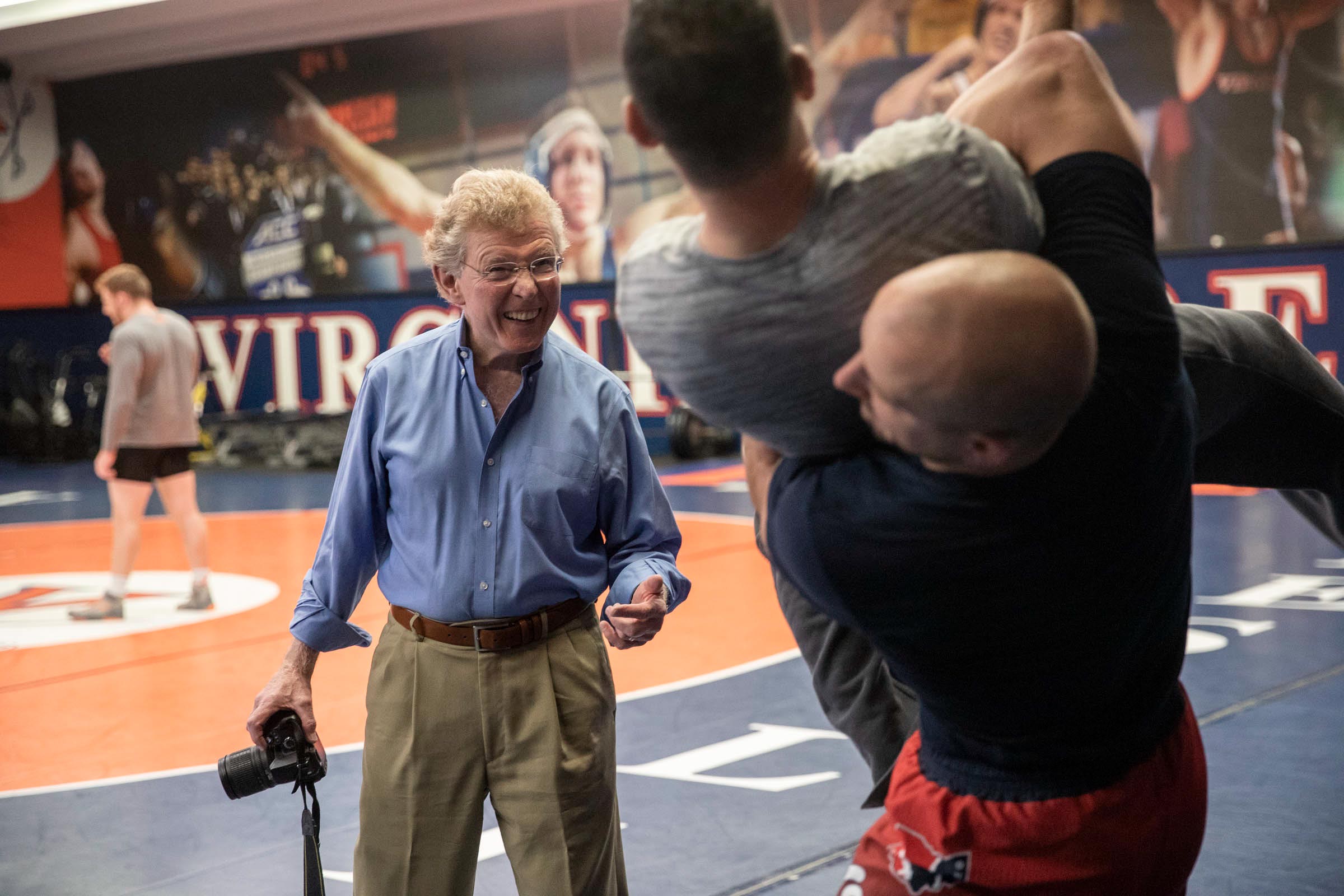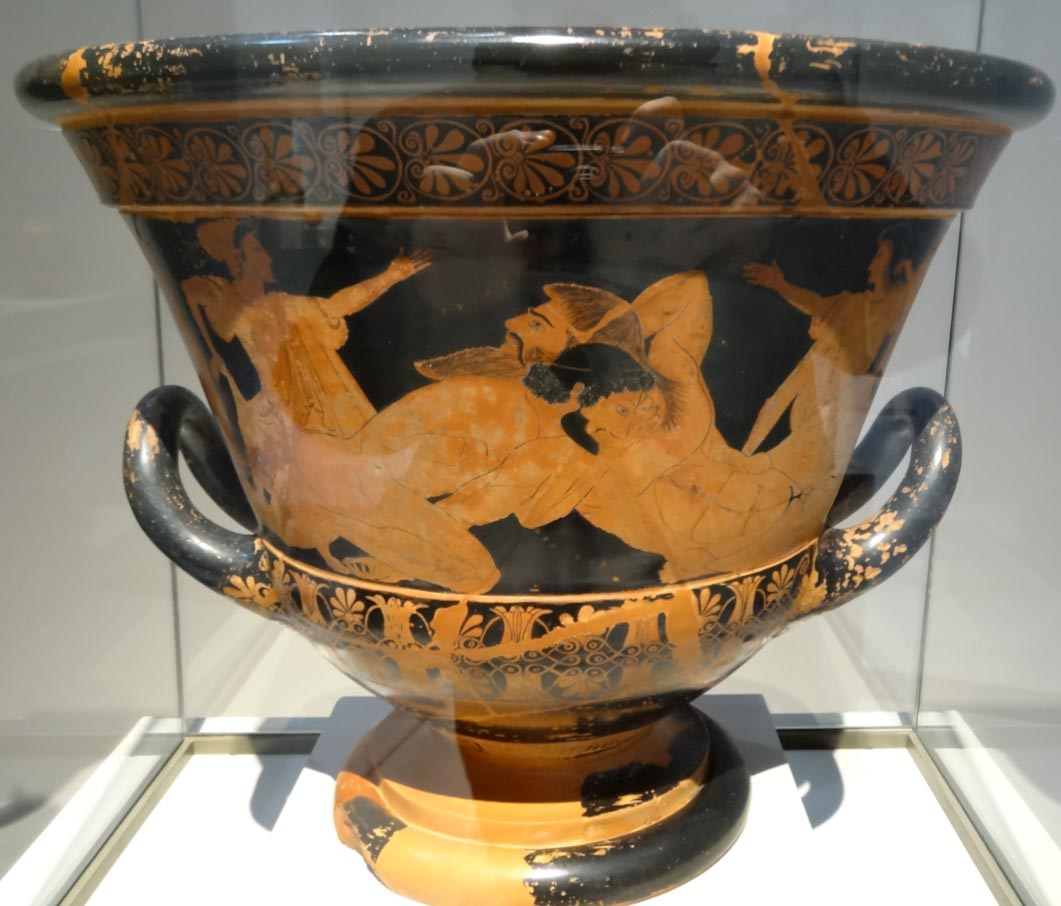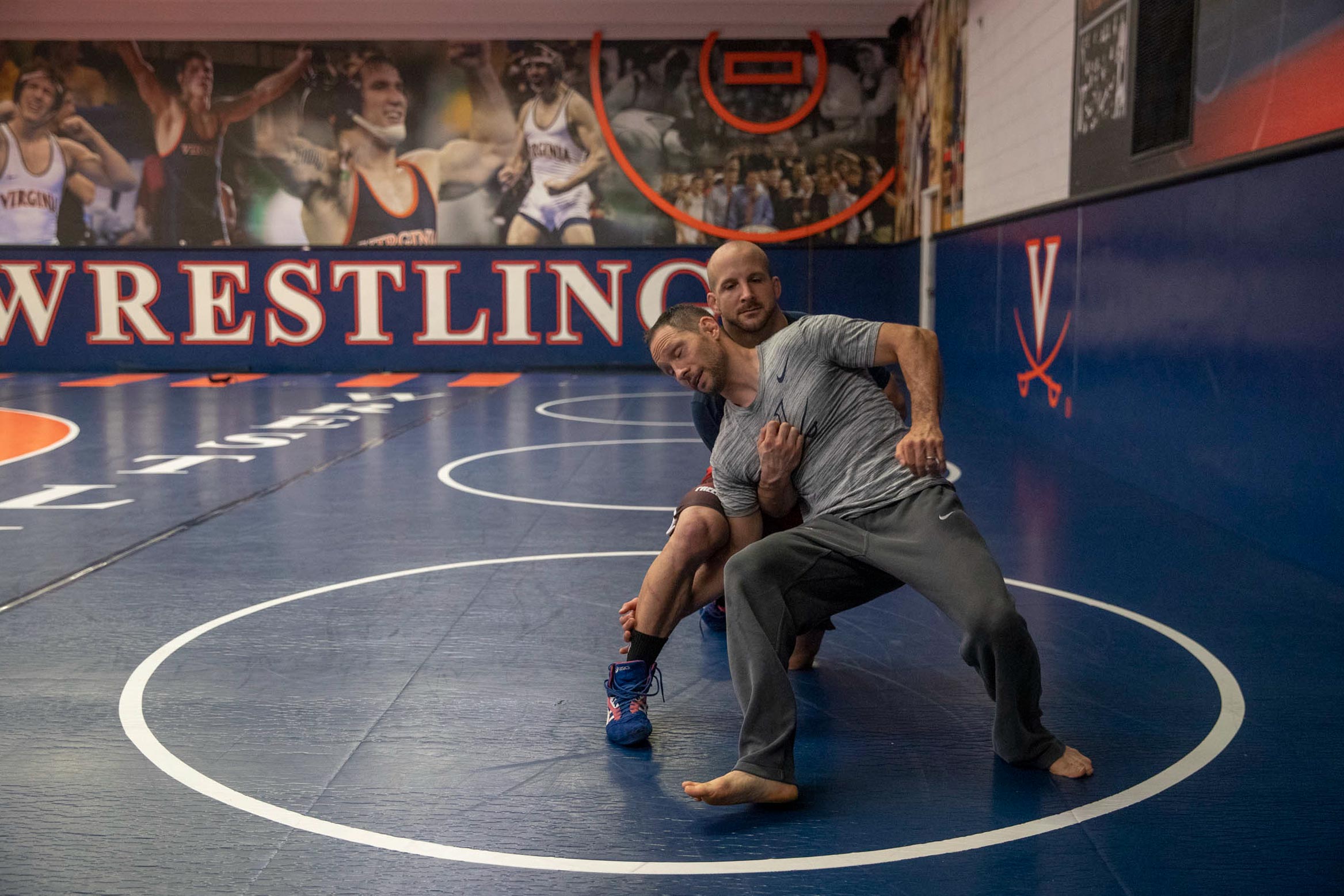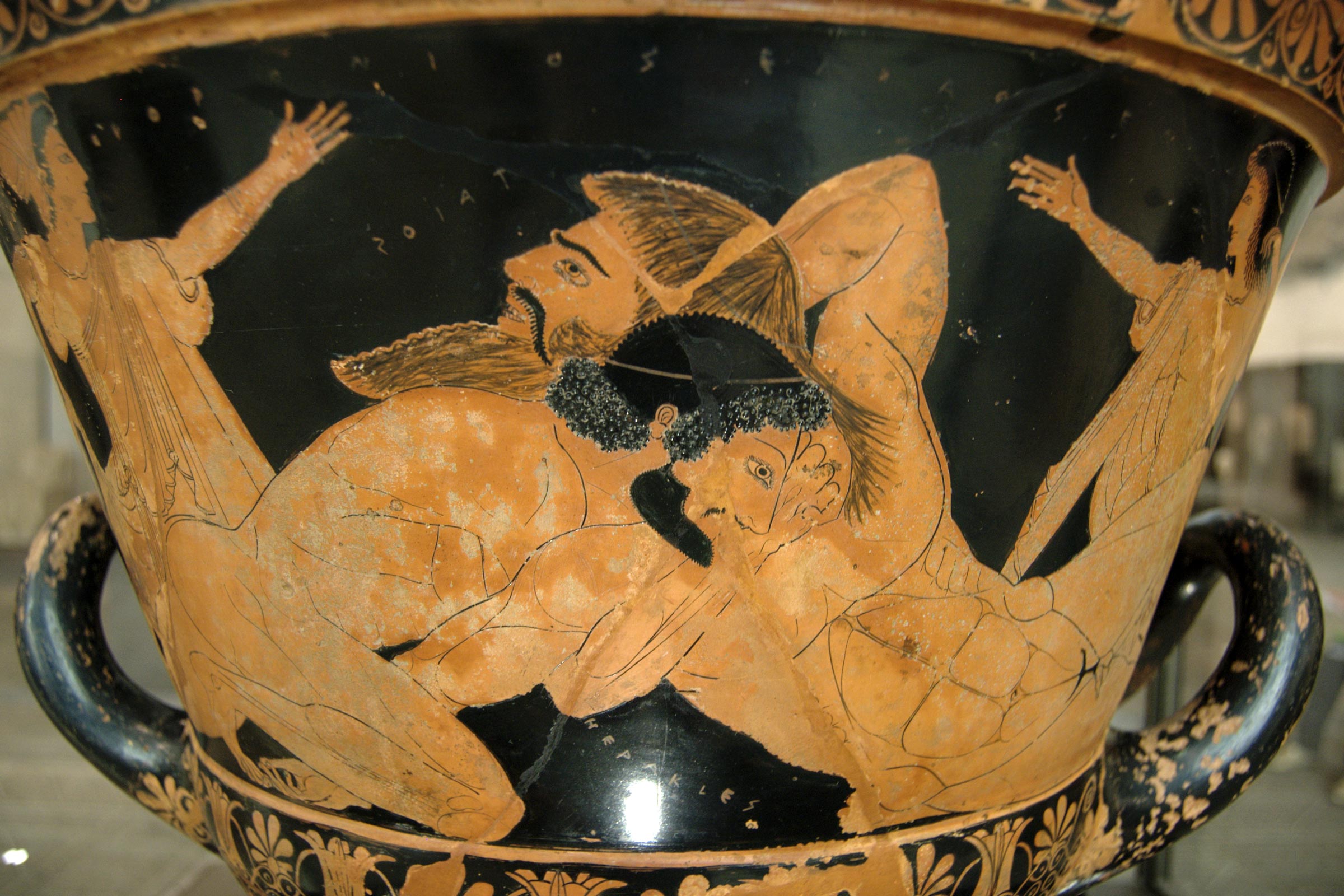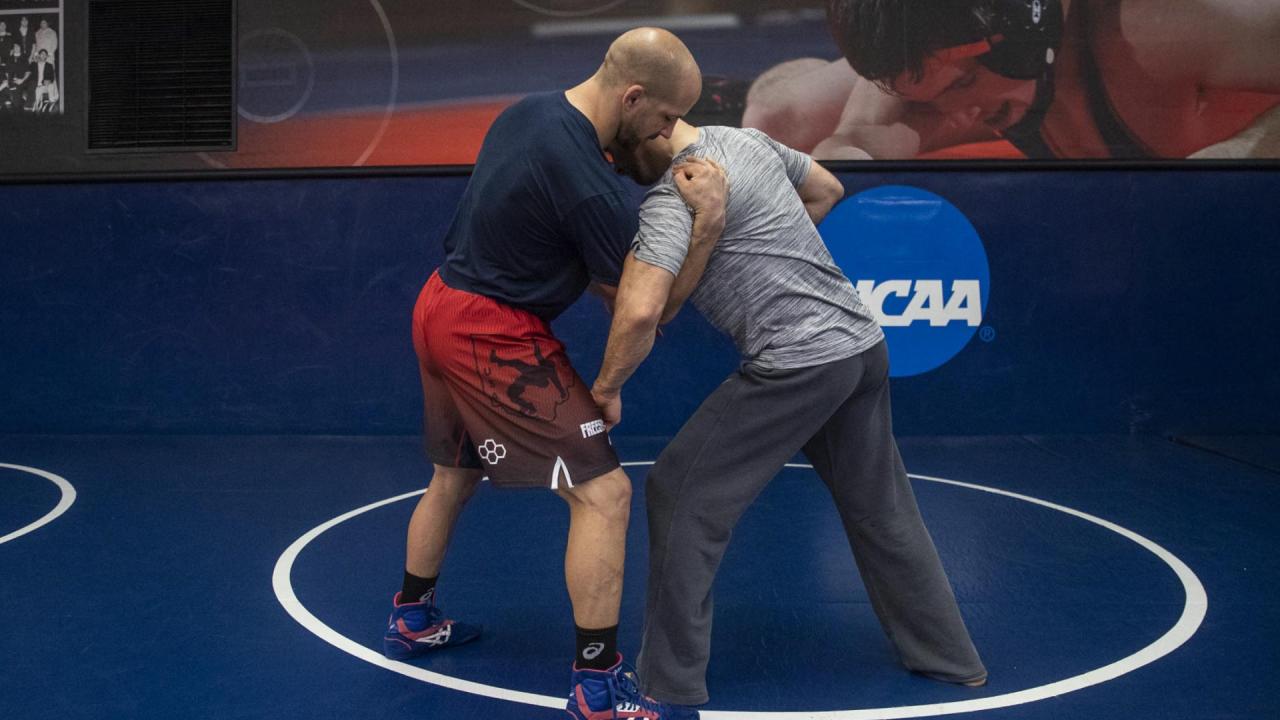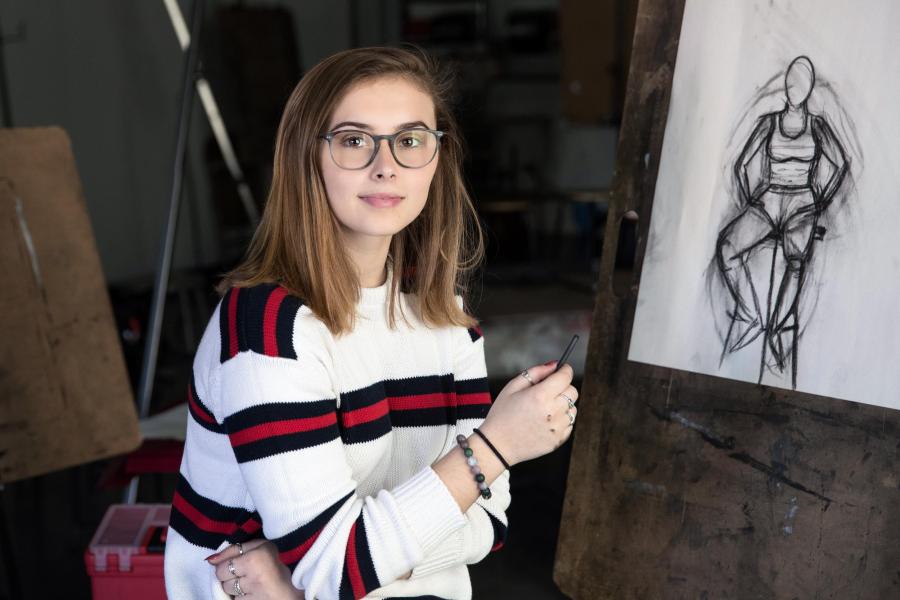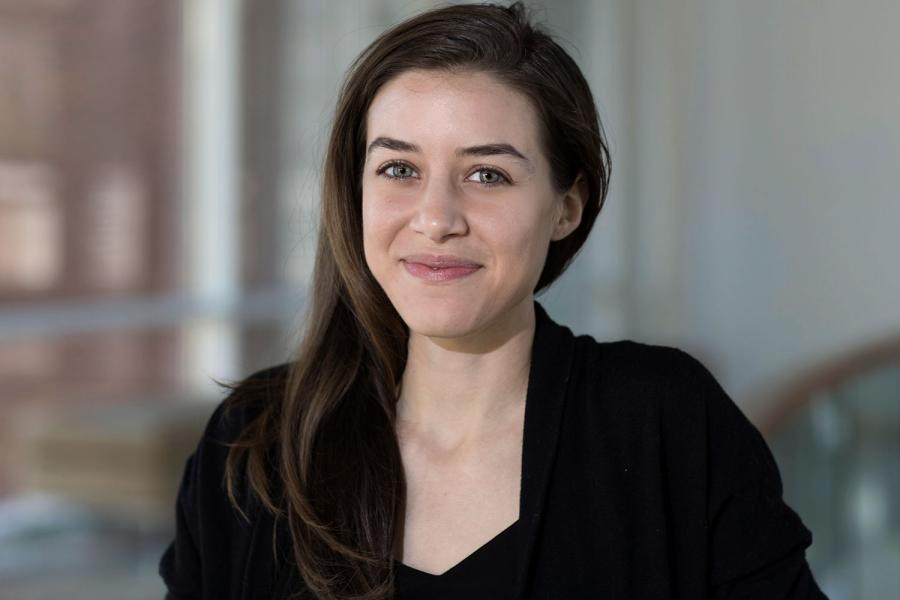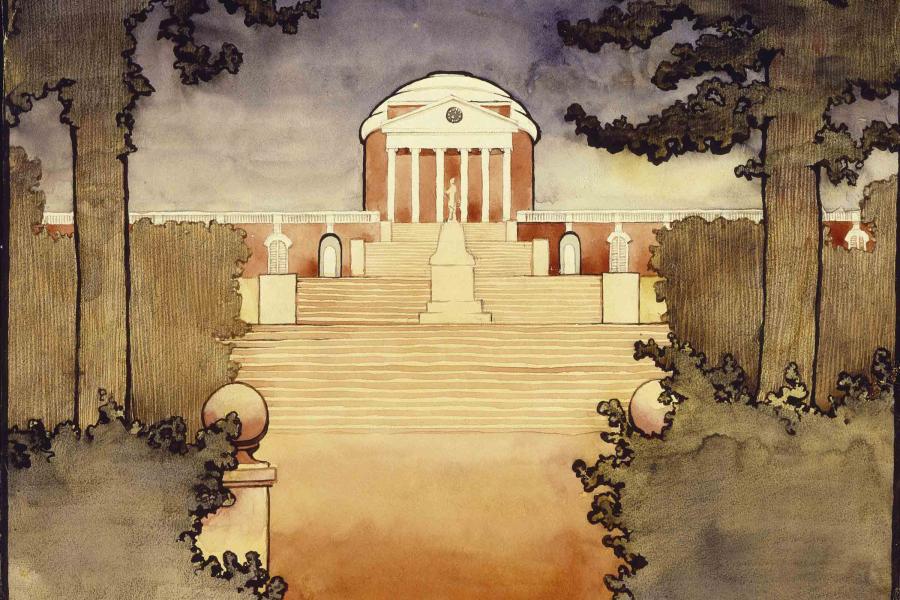On a recent weekday in Onesty Hall, University of Virginia classical archaeologist John Dobbins, UVA head wrestling coach Steve Garland and assistant coach Trent Paulson exchanged a few pleasantries, then took off their shoes and stepped onto a wrestling mat.
Their objective: to try and solve a mystery surrounding an ancient Greek vase residing in the Louvre museum in Paris.
For Dobbins, the mystery was years in the making.
For Garland, the mystery – at least, initially – was why a classical archaeologist required a wrestling coach’s expertise.
“‘Surprised’ would be an understatement,” said Garland, recalling his first interaction with Dobbins.
While in graduate school, and for the better part of a 40-year teaching career at UVA, Dobbins had wondered about a mythological wrestling scene painted by the renowned vase painter Euphronios that dated back to 510 BCE.
